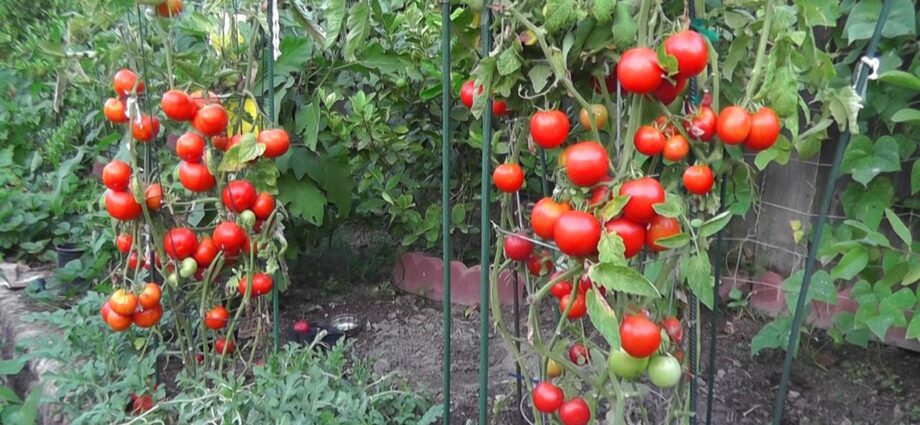Contents
How to properly grow tomatoes in the country: tips
We tell you how to get an excellent harvest of tomatoes in your own summer cottage.
6 May 2017
Such seedlings will give almost 30% more yield than varietal seeds. Hybrids are even more resistant to pests and diseases. Ideal tomato seedlings are 40-50 days old, short, young, without inflorescences.
The best precursors to tomatoes are cucumbers, cabbage, onions, and legumes. But you can plant them in the place where peppers, eggplant, potatoes or other nightshades used to grow, no earlier than after 2 years.
We breed tomatoes with cucumbers
Try not to grow them in the same greenhouse. Cucumbers love high humidity and “tropical” temperatures, which can be fatal for tomatoes. But if, nevertheless, the neighborhood cannot be avoided, divide the greenhouse with a sheet of film into two compartments with separate entrances and vents for ventilation.
Sometimes it is a pity to remove strong lateral shoots and pinch the tops, so the bush turns out to be very spreading and almost does not bear fruit. Determinant varieties (which do not require pinching) are suitable for open ground, but even they should pinch the stem after laying the fourth brush and two leaves in order to remove the growth point and allow the fruits to form. Lateral stepchildren growing from the axils of the leaves should be removed at a height of no more than 3-4 cm at the base, without leaving “hemp”, in the morning and in dry weather, so that the wound dries up.
The higher the fruit appears on the lash, the higher the leaves need to be cut. If this is not done, then the thickened plants are poorly ventilated and get sick. It is necessary to trim leaves and stepsons 3-4 times over the summer. Before the first brush ripens, all the leaves below it must be removed, and after harvesting the fruits from the brush, continue removing the old foliage even higher.
Tomatoes love abundant watering, but not more often than 1 time in 5-7 days. Do not water on the leaves and stems, only at the root: this will reduce the risk of apical rot, late blight. If the fruit is cracking, reduce watering.
We open the doors for 2-3 hours a day and let the plants breathe, otherwise there will be no normal pollination, and therefore no fruit.
We do not overfeed with nitrogen fertilizers
They are important only at the initial stage of growth, and in the future they can do a disservice. Especially beware of spreading large amounts of manure when planting. Tomatoes “fattening” (with a powerful vegetative mass) on manure give a meager harvest. Once every 10-14 days, apply complex mineral fertilizers (for example, superphosphate or special for tomatoes) and carry out foliar dressing (for example, Uniflor Bud, UniforMikro, Ovary, humic fertilizers, etc.).
We carry out hilling with damp earth when root tubercles appear in the lower part of the ground. Re-hilling will be needed when the color of the stem near the ground becomes bluish, this will increase the yield.










